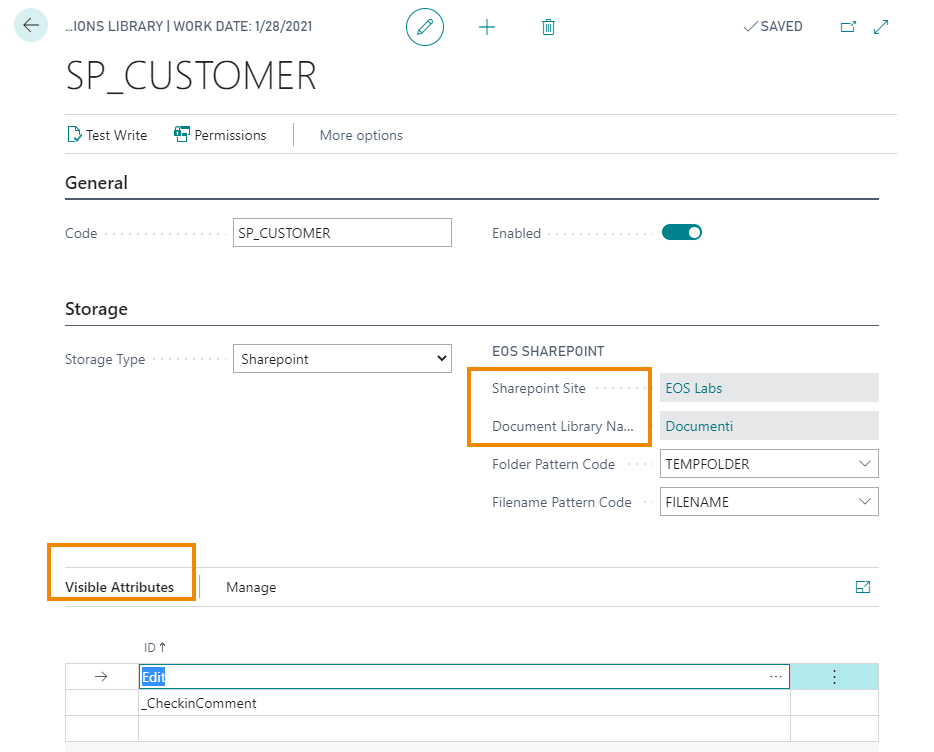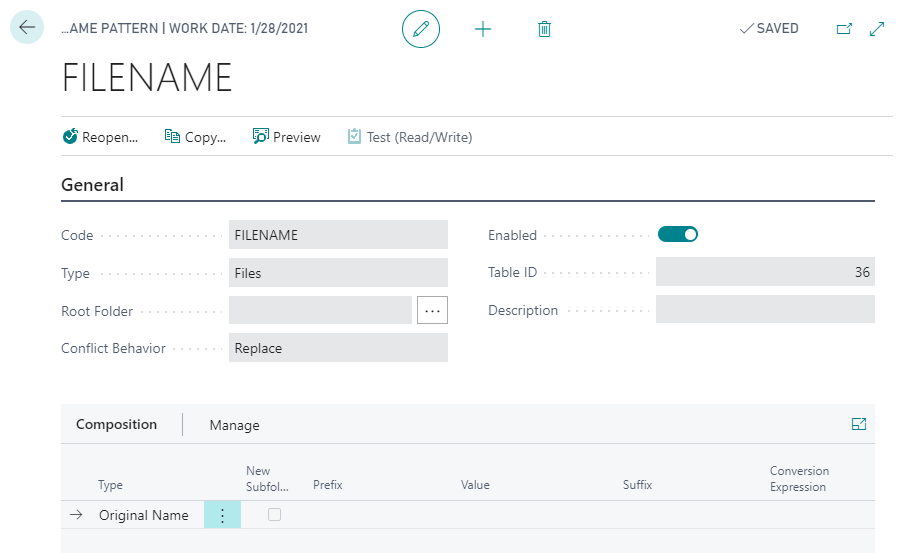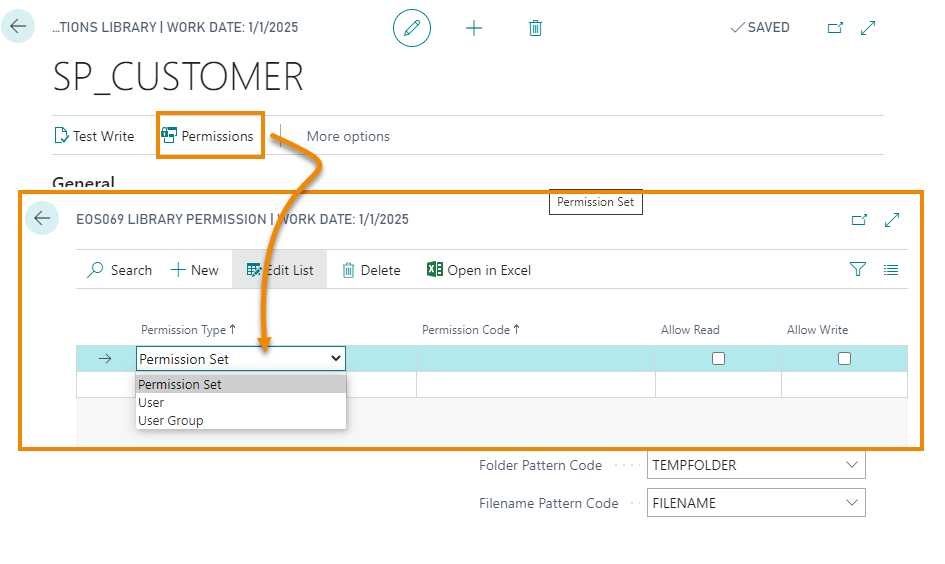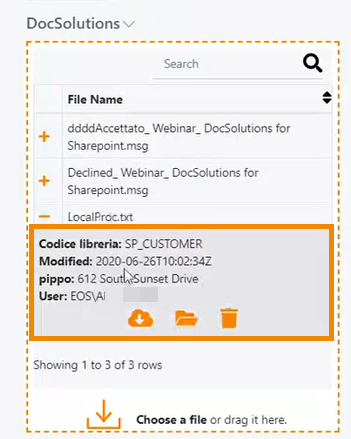Setup
Sharepoint setup
In Sharepoint setup (DCS) you need to connect your Business Central client to the Sharepoint tenant:
| Field | Description |
|---|---|
| Directory (tenant) ID | The Azure tenant ID to which connect the client . It’s already filled in SAAS environment. |
| Application (client) ID | The Azure application client ID. Already filled in by the system. |
| Client Secret | Azure application Client Secret. Already filled in by the system. |
| Secret Expiration Date | Allow to define when the Client Secret is going to expire, a notification will be shown near the expiration date |

An office administrator is needed to login and grant permission to DocSolutions app.
From Test Login you can verify that the operation was successful:

DocSolutions Table Setup (DCS)
In DocSolutions (DCS) Table Setup, the default setups must be loaded from Actions-> Load Default:

The system offers us the defaults to load, choose “DocSolution for Sharepoint”. Then he proposes the tenant, the client and the secret again.
Confirm by pressing “Next”. Finally, we must indicate the Sharepoint site to which to associate the DCS app and the specific Library (in the image: “Eos Labs” and “Documents”). By clicking on Default import settings, the setup is complete.
Libraries Setup
From Edit, open the Document Library(s) you wish to enable, e.g. “Customer”:

the system automatically enables the display of the Factbox relating to DCS on the Lists.
From Libraries we choose a default library and from Open library we set its setup:

In the Tab “Storage” we choose the Sharepoint Site and the Document Library to which to connect it.
At the bottom of the page we set the attributes to be displayed on the Business Central pages:
Folder pattern
From the drop-down menu on the Folder Pattern Code field, choose “Select from full list” and from Manage-> Edit you can view/modify the document storage path:
| Field | Description |
|---|---|
| General | |
| Code | Filename pattern code |
| Type | specify whether the pattern will be used for Folders Files |
| Root Folder | path where the files will be saved. In the example they will be placed in the DocSolutions sub folder which is contained in the Documents folder |
| Conflict Behavior | define what to do if the system finds a file already present in the destination folder: Fail: the system will report with an error (the file cannot be loaded as it already exists) Replace: the system will replace the file already present with the one uploaded Rename: the system renames the file by adding a progressive number at the end of the name |
| Enabled | you can create the setup card and enable or disable it as needed |
| Composition | |
| Tipo | Indicate the Line Type. It can be: Text, Field, Primary Key, No. Series, Table Name, Table No., Original Name E.g.:  If you write:  the uploaded files will be saved in Documents \ DocSolutions, in a further folder “Customer”, in a further subfolder “Customer No.". |
By pressing Test (Read/Write) we check that the connections are working:
Filename pattern
In the same way, from the drop-down menu on the Filename Pattern Code field, we select “Select from full list” and from Manage-> Edit we can view/modify the name to be assigned to the documents:

Permissions
From the Library card-> Permissions we define which User Group, User or Permission set can read / write files in a specific location: 
Mapping
From the DocSolutions Table setup (DCS) it is possible to map the fields in order to choose what to display on Sharepoint:

The Library, the name of the field, the label must be defined and a function to be associated with the field or a value must be chosen:

For each line it is possible to establish whether or not the information it is mandatory


Feedback
Was this page helpful?
Glad to hear it! Please tell us how we can improve.
Sorry to hear that. Please tell us how we can improve.